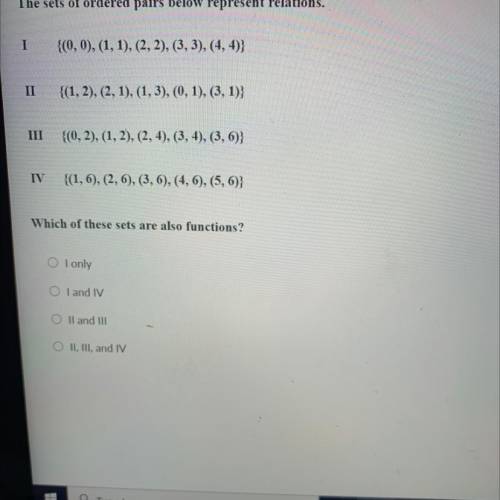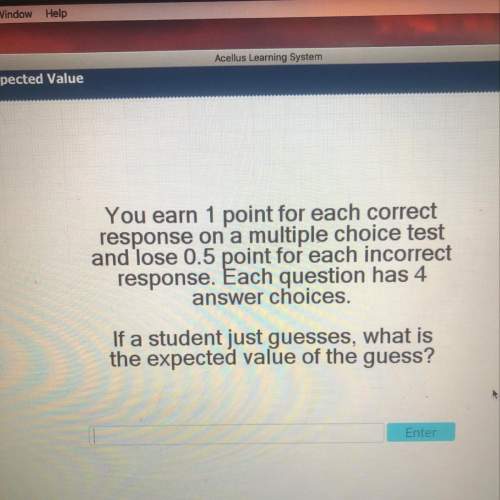The sets of ordered pairs below represent relations.
I
{(0, 0), (1, 1), (2, 2), (3, 3), (4,4)...

Mathematics, 24.03.2021 21:50 Neko1kat
The sets of ordered pairs below represent relations.
I
{(0, 0), (1, 1), (2, 2), (3, 3), (4,4)}
II
{(1,2), (2, 1), (1,3), (0, 1), (3, 1);
III
{(0, 2), (1, 2), (2, 4), (3, 4), (3, 6)}
IV
{(1,6), (2,6), (3,6), (4, 6), (5, 6)}
Which of these sets are also functions?
O I only
O I and IV
O II and III
O II, III, and IV


Answers: 2


Another question on Mathematics


Mathematics, 21.06.2019 20:30
Merrida uses a pattern in the multiplication table below to find ratios that are equivalent to 7: 9. if merrida multiplies the first term, 7, by a factor of 6, what should she do to find the other term for the equivalent ratio? multiply 9 by 1. multiply 9 by 6. multiply 9 by 7. multiply 9 by 9.
Answers: 1

Mathematics, 21.06.2019 23:50
Mariah is randomly choosing three books to read from the following: 5 mysteries, 7 biographies, and 8 science fiction novels. which of these statements are true? check all that apply. there are 20c3 possible ways to choose three books to read. there are 5c3 possible ways to choose three mysteries to read. there are 15c3 possible ways to choose three books that are not all mysteries. the probability that mariah will choose 3 mysteries can be expressed as . the probability that mariah will not choose all mysteries can be expressed as 1 −
Answers: 1

You know the right answer?
Questions






Mathematics, 12.12.2020 16:10



Mathematics, 12.12.2020 16:10

History, 12.12.2020 16:10


Mathematics, 12.12.2020 16:10







Mathematics, 12.12.2020 16:10

Mathematics, 12.12.2020 16:10




